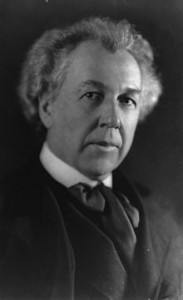[contextly_auto_sidebar id=”JXp6XOeglaoCeQ8tXG7WjOAVz5fmoupq”]
ARCHITECTURE is a funny field: Much of its most important, most talked-about work is done for a tiny number of clients — we’ll call them rich people — but the profession has a lingering (and in some cases sincere) social conscience and concern for the broader built environment the rest of us live in.
That blend of ambitions has come unstuck, an architect and a journalist argued the other day in this New York Times story. Here are Steven Bingler and Martin C. Pedersen:
For too long, our profession has flatly dismissed the general public’s take on our work, even as we talk about making that work more relevant with worthy ideas like sustainability, smart growth and “resilience planning.”
… The question is, at what point does architecture’s potential to improve human life become lost because of its inability to connect with actual humans?
… We’re brilliant at devising sublime (or bombastic) structures for a global elite who share our values. We seem increasingly incapable, however, of creating artful, harmonious work that resonates with a broad swath of the general population, the very people we are, at least theoretically, meant to serve.
… Architecture’s disconnect is both physical and spiritual. We’re attempting to sell the public buildings and neighborhoods they don’t particularly want, in a language they don’t understand. In the meantime, we’ve ceded the rest of the built environment to hacks, with sprawl and dreck rolling out all around us.
I have little disagreement with the authors, and their descriptions of working in post-storm New Orleans are quite persuasive. But I’ll suggest the problem is not simply with the culture of high-end architecture, but also a larger “culture of culture” — that is, in a pragmatic Anglo-American world that increasingly thinks that the fine arts and design are for the rich, and where there is very little education in architecture and urbanism for non-practitioners. If architects and the general public are estranged, both could benefit from moving towards each other a bit.
The piece is not long, but it’s fairly complex. I urge my readers to check it out in full. And I’ll look forward to the authors’ upcoming book, Building on the Common Edge.


In 1985, a radical African-American back-to-nature group in Philadelphia called MOVE was besieged in the row house where they were living. In a confrontation with them seven years earlier a policeman had been killed. Nine members of MOVE were given sentences ranging from 30 to 100 years. And the remaining members were harassed beyond their lunatic radicalism into complete madness. So when the 1985 siege began, pretty much everyone knew that people were going to die. There were three women, four men, and six children in the house. The police fired thousands of rounds, but no one came out, so they used a helicopter to drop a C-4 bomb on the roof. The radicals still didn’t come out so someone in charge gave the order to “Let it burn.”
Philly’s row houses are highly flammable so 60 neighboring houses burned down as well. Eleven MOVE members died in the flames, including 5 children. The residents of the 60 burned buildings were almost all African-Americans and poor. The city built new housing in the burned area, but the construction was so shoddy that the 60 buildings were condemned in 2000. Another version of “Let it burn.”
It was well-known among city engineers that the levees in New Orleans were inadequate and that one day the city would be destroyed. The population was 62% black, and mostly poor. They didn’t have the economic or political power to have the levees strengthened. The inevitable came. The spectacle of the government standing by idly and not even helping the people as the city was destroyed shocked the world. “Let it burn.”
Detroit was also destroyed through intentional neglect. It was obvious that free trade laws would destroy American manufacturing and along with it entire cities. Detroit is in the process of bull dozing 40 square miles of the city. “Let it burn.”
The world also watched the shameful spectacle of developers behaving like wolves fighting over a burned carcass at the World Trade Tower site. The loss of planned cultural venues in the area was only one of the casualties. And few want to talk about why such major buildings collapsed like a house of cards. “Let it burn.”
Under neoliberalism, the market is Shiva, the all-encompassing destroyer and purifier of society. Massive destruction is seen as part of progress. This philosophy imbues every aspect of American society, including our architecture, and our city planning. The bottom line is the overwhelming determinant, so how could most architecture be anything but “sprawl and dreck rolling out all around us” as Pedersen and Bingler colorfully describe? The problem is easily solved. “Let it burn.”
Sturgeon’s Law: 90% of everything is crud.
What changes? Population density.